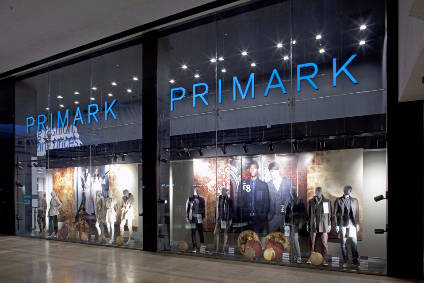
For the first half (H1) ending 5 March, Primark sales in actual currency grew 59% to GBP3.54bn (US$4.49bn) while adjusted operating profit grew to GBP414m from GBP43m a year earlier.
Like-for-like sales at Primark for the first half were 10% lower than pre-Covid levels in the same period two years ago. Total sales were 4% lower than pre-Covid levels two years ago, having opened 27 stores which increased selling space during this period.
Sales were disrupted by the Omicron infections in the middle of the half-year but subsequently, Primark has seen like-for-like sales pick up strongly in the UK and Ireland. However, recovery has been slower in Continental Europe where some restrictions have persisted for longer and consumer footfall has remained weaker.
Sales in Continental Europe were also ahead of last year. Total sales were 3% below two years ago; like-for-like sales were 14% down, offset by a 12% increase in retail selling space.
The US business traded well. Total sales at Primark US were 37% ahead of two years ago; like-for-like sales were 1% ahead of two years ago.
Going forward, Primark is expecting full-year margin to be around 10%. While it has been able to broadly mitigate rising supply chain costs and inflation in raw materials during the first half due to a favourable dollar exchange rate and reduction in-store operating costs, the second half will see customers feel the effect of price increases on some of the autumn/winter stock due to inflationary pressure and the strengthening dollar.
The group also says supply chain disruption is expected to continue with delays in dispatch at ports of origin and longer shipping times anticipated.
Elsewhere, the group elaborated on its digital plans, having launched its new customer website earlier this year. The website allows customers to see new products and view store availability.
“We have seen good early reaction from customers: in the first two weeks, traffic to the new site doubled with customers viewing on average twice as many individual pages per session. We will add additional features including a customer account and the ability to create a wishlist of favourite products enabling more personalised marketing. We will roll out the new website across all our markets by the autumn.”
On the sustainability front, Primark is developing key performance indicators for the three pillars that will form the basis of ESG reporting in its full-year results.
“We are making progress in a number of key areas, in line with our pledge to make more sustainable choices affordable for all. Some 39% of all clothes sold in the first half were made from recycled or more sustainably sourced materials, a big step-up from 25% for the six months to July 2021. More than half of the clothes we sell are made from cotton and one-third of the cotton in our clothes is now recycled, organic or sourced from the Primark Sustainable Cotton Programme, up from 27% at the launch of Primark Cares. We have now trained some 150,000 farmers in more sustainable farming practices under this Programme, and we are well-placed to reach our target of 160,000 farmers by the end of this calendar year.”
The group is also making progress in developing the pipeline of new stores to deliver its ambition to grow its store estate to some 530 stores in the next five years. It plans to enter new markets of Romania and Slovakia during the financial year, its 15th and 16th markets and is focused on growing its US store estate.
Analyst reaction to Primark H1 numbers
Pippa Stephens, retail analyst at GlobalData, said: “Primark has been investing significantly in its digital proposition, having launched its revamped website in the UK at the end of April 2022, allowing shoppers to see live in-store stock information. This will help the retailer attract more shoppers to its stores, with 48.0% of UK consumers stating in GlobalData’s February monthly survey that a website that shows the products available in-store would make them more likely to purchase from Primark. Its next step should be the implementation of click & collect, as of the 56.6% of Primark shoppers that cited that they would prefer to purchase its products online, 76.6% would still do so if click & collect was the only option.”
She added: “Primark has stated that it was able to mitigate the ongoing supply chain cost increases throughout its first half thanks to favourable US dollar exchange rates and a reduction in store-related costs, protecting its operating profit margin which stands at 11.7%. However, the retailer expects this margin to take a hit in H2 FY2021/22 as raw material and shipping costs continue to rise even further, leading it to implement price increases across some of its autumn/winter ranges. These issues have been exacerbated further by the Russia-Ukraine conflict, as while it does not conduct business in either country, it has manufacturing sites in Moldova, Romania and Bulgaria, which are likely to have been disrupted. However, inflationary pressures on shoppers’ discretionary spending will provide an opportunity for Primark as many consumers will feel the need to trade down to value retailers.”



